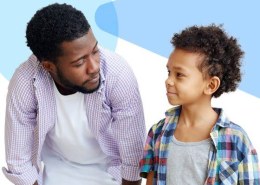Understanding and managing emotions is a critical aspect of childhood development. Emotions play a foundational role in shaping behavior, building relationships, and developing communication skills. However, for young children, the ability to comprehend, express, and regulate emotions can be a challenging journey. They experience a wide range of emotions from an early age, but they often lack the vocabulary, self-awareness, and coping strategies needed to navigate their feelings effectively. As parents, caregivers, and educators, it is essential to provide support that helps children grasp and understand emotions.
Why Emotional Development Matters
Emotional development is a cornerstone of mental health and social functioning. When children learn to understand their emotions, they are better equipped to:
- Build strong relationships: Emotional awareness enhances children’s ability to empathize with others and develop meaningful friendships.
- Communicate effectively: A child who understands emotions can express their feelings clearly, helping others understand their needs.
- Cope with stress: Managing emotions helps children develop resilience and navigate difficult situations with greater ease.
- Avoid behavioral issues: When children can regulate their emotions, they are less likely to act out in frustration, anger, or confusion.
In early childhood, emotions can be overwhelming. Young children may not know why they feel a certain way or how to handle their emotions, leading to meltdowns, aggression, or withdrawal. Adults play a critical role in helping children understand their emotions and develop strategies to manage them.
Understanding the Emotional World of Young Children
Young children, typically between the ages of 2 and 6, experience a wide spectrum of emotions. These include basic emotions such as happiness, sadness, anger, and fear. However, they may not have the language or cognitive development to identify or understand these emotions fully. For instance, a child might cry when they’re frustrated but may not realize they are frustrated because their toy isn’t working the way they want it to.
During early childhood, children are also in the process of developing self-regulation skills, which allow them to manage their emotional responses. Emotional regulation can take years to develop, and children will often need guidance from adults to help them navigate this process.
Strategies to Help Children Grasp Emotions
1. Modeling Emotional Awareness and Regulation
Children learn by observing the adults around them. When parents or caregivers model healthy emotional awareness and regulation, children begin to understand that emotions are natural and manageable. For example, if a parent says, “I’m feeling frustrated because I’ve lost my keys, but I’ll take a deep breath and keep looking,” it demonstrates to the child that emotions can be expressed and managed calmly.
Parents can also model empathy by acknowledging their child’s emotions, such as saying, “I see you’re upset that we have to leave the playground. It’s okay to feel sad.” This type of validation helps children recognize their own emotions and feel understood.
2. Teaching Emotional Vocabulary
One of the first steps in helping children understand emotions is teaching them the words they need to describe their feelings. When a child has the vocabulary to identify their emotions, they can express themselves more effectively, reducing frustration and misunderstandings.
Begin by teaching basic emotional words like happy, sad, angry, and scared. As children grow, introduce more nuanced terms such as frustrated, disappointed, excited, or nervous. Books, songs, and storytelling are excellent tools for expanding emotional vocabulary. For example, reading books about emotions can provide children with context and examples of different feelings. Some books, such as “The Color Monster” by Anna Llenas or “In My Heart” by Jo Witek, focus specifically on emotions and help children connect feelings to words.
3. Labeling Emotions During Real-Life Situations
In day-to-day interactions, caregivers can help children by labeling emotions in the moment. For example, if a child is crying because their sibling took their toy, a caregiver might say, “You seem angry because your sister took your toy. It’s okay to feel angry, but we can talk about it calmly.” By doing this, the caregiver acknowledges the child’s feelings and connects the emotion to the situation.
This practice not only helps children recognize their emotions but also teaches them that emotions are normal and can be discussed openly. Labeling emotions can also extend to situations the child observes in others. For instance, while watching a movie or playing with friends, a caregiver might point out, “The character looks happy because she found her favorite toy” or “Your friend seems upset because the game didn’t go her way.”
4. Creating a Safe Space for Emotional Expression
Children need to feel safe to express their emotions without fear of judgment or punishment. Creating an environment where children know that their emotions are valid and will be met with empathy fosters emotional intelligence.
Encourage children to talk about how they feel, and avoid dismissing their emotions by saying things like “You’re fine” or “Don’t be upset.” Instead, validate their feelings by saying, “I understand that you’re feeling upset right now. Do you want to tell me why?” This approach teaches children that it’s okay to express emotions, and it gives them the opportunity to explore their feelings in a supportive environment.
5. Role-Playing and Pretend Play
Pretend play and role-playing are powerful tools in helping children understand emotions. Through imaginative scenarios, children can experiment with different feelings and practice empathy. For example, if a child is playing with dolls, they might have one doll “feel” sad because the other dolls aren’t sharing. This allows the child to explore sadness in a way that feels safe and manageable.
Caregivers can also engage in role-playing games to help children practice responding to different emotional situations. For example, you could role-play a situation where one character is frustrated because they can’t solve a puzzle and talk through how the character could manage their frustration.
6. Teaching Coping Strategies
Alongside understanding emotions, children need to learn coping strategies to help regulate their feelings. Breathing exercises, counting to ten, or taking a break in a calm space are all helpful techniques for managing strong emotions.
Introduce these strategies when the child is calm and practice them regularly so that they become second nature. For instance, teach a simple deep-breathing technique by saying, “Let’s take a deep breath together when we feel upset.” Using a calm-down corner with soothing toys or books can also help children reset emotionally when they feel overwhelmed.
7. Empathy Building Through Perspective-Taking
Teaching children to understand and consider other people’s emotions is a crucial step in emotional development. By encouraging perspective-taking, caregivers help children develop empathy, which strengthens their ability to form connections with others.
You can foster empathy by asking children how they think others are feeling in various situations. For example, you might say, “How do you think your friend felt when you didn’t share your toy?” This prompts the child to think beyond their own emotions and consider others’ perspectives.
Conclusion
Helping young children grasp and understand emotions is a vital part of their overall development. By modeling emotional awareness, teaching emotional vocabulary, labeling feelings, creating a safe space for expression, using pretend play, teaching coping strategies, and encouraging empathy, caregivers can guide children toward emotional intelligence.
When children learn to understand their emotions, they are better equipped to manage their feelings, form strong relationships, and navigate the complexities of the world around them. Emotional education is a lifelong journey, and the skills developed in childhood lay the foundation for mental well-being, resilience, and social success in the years to come.

